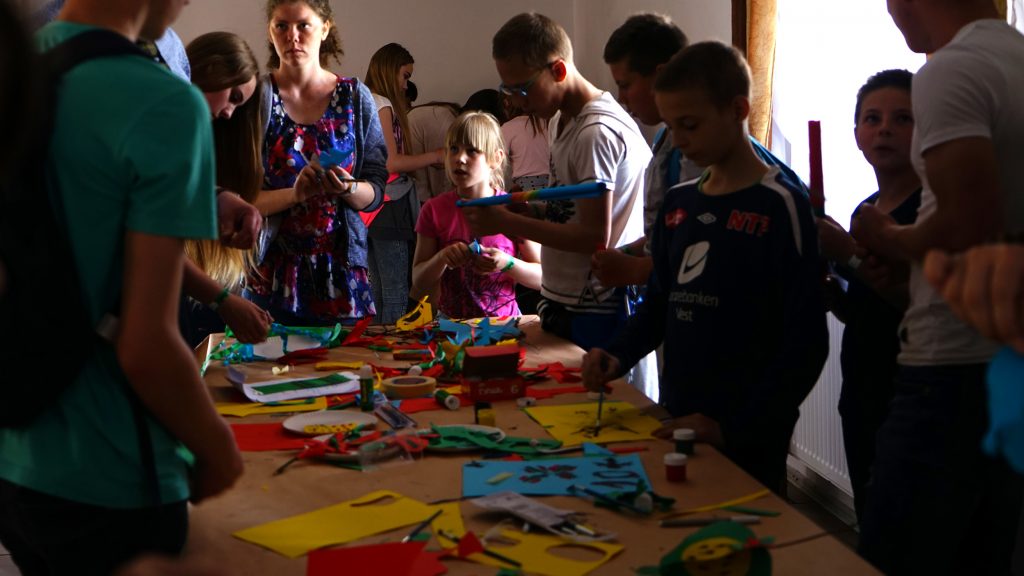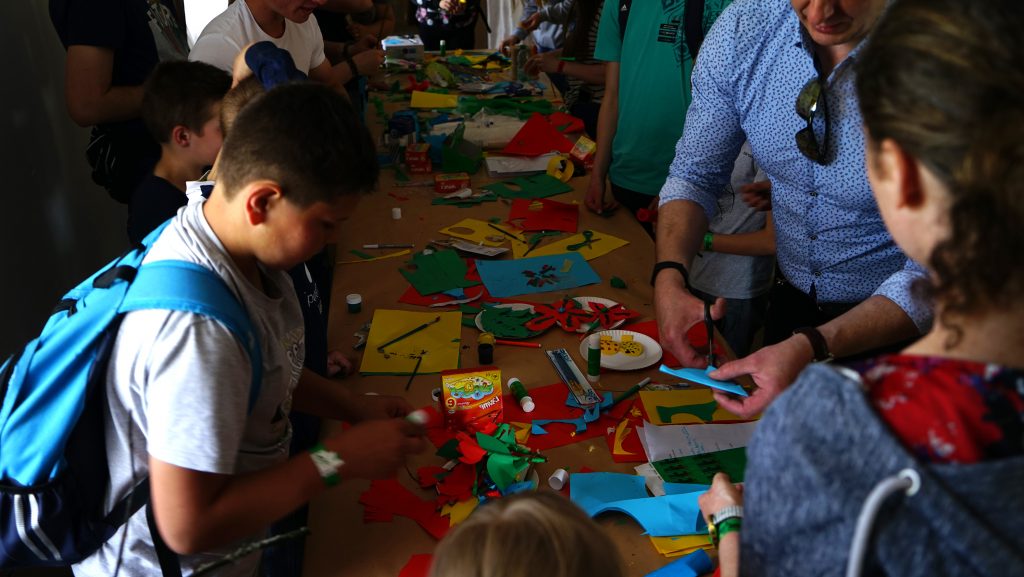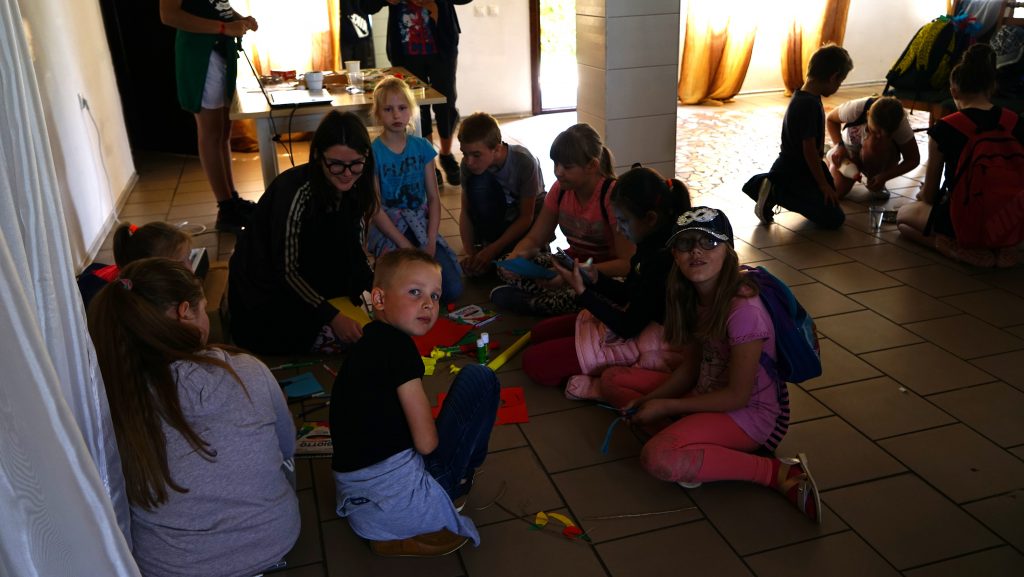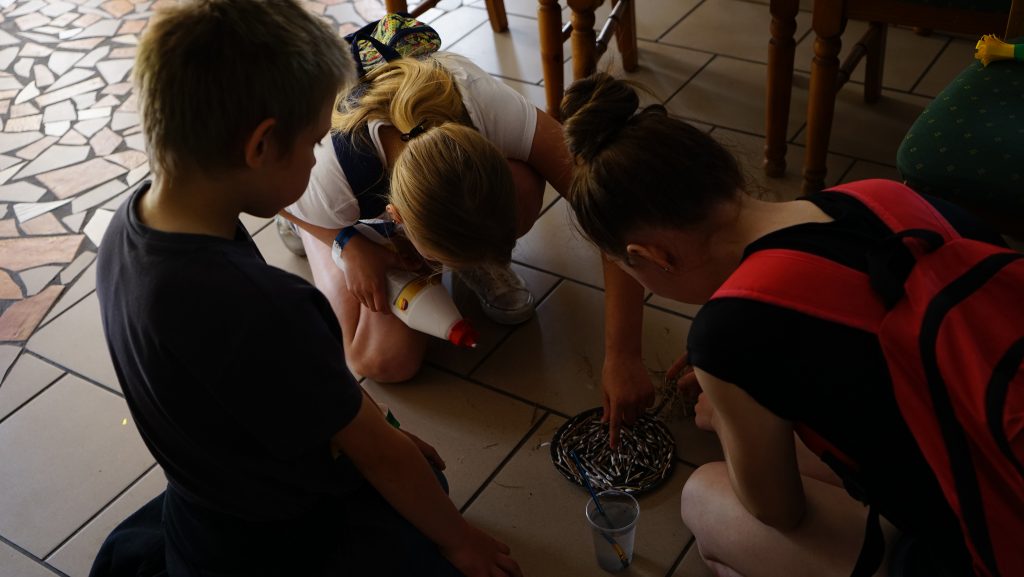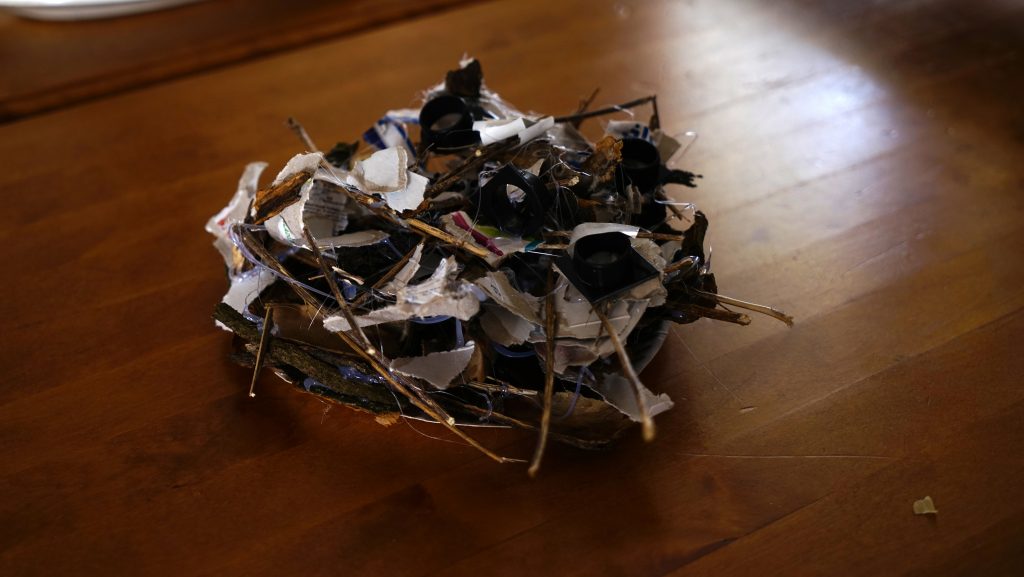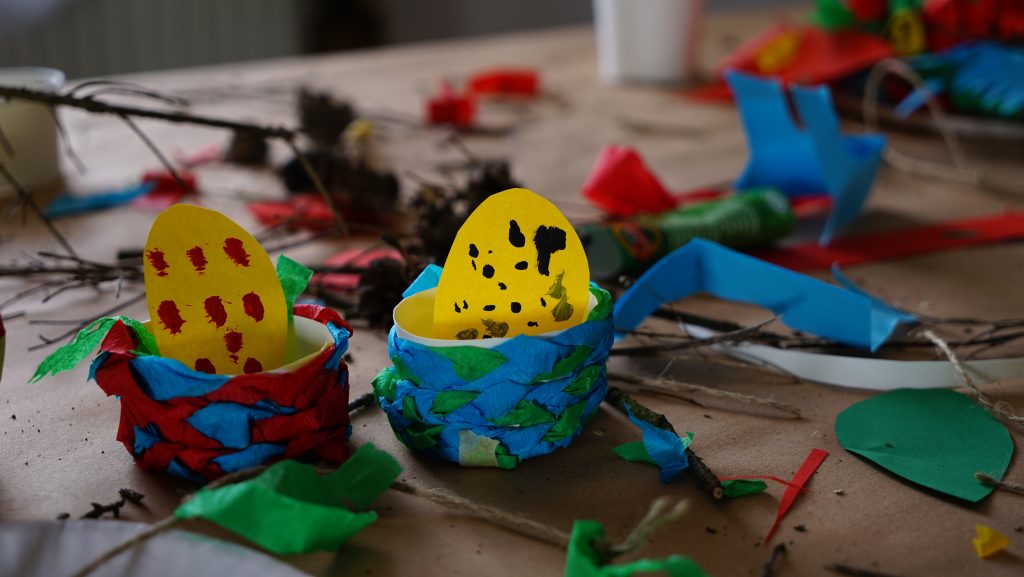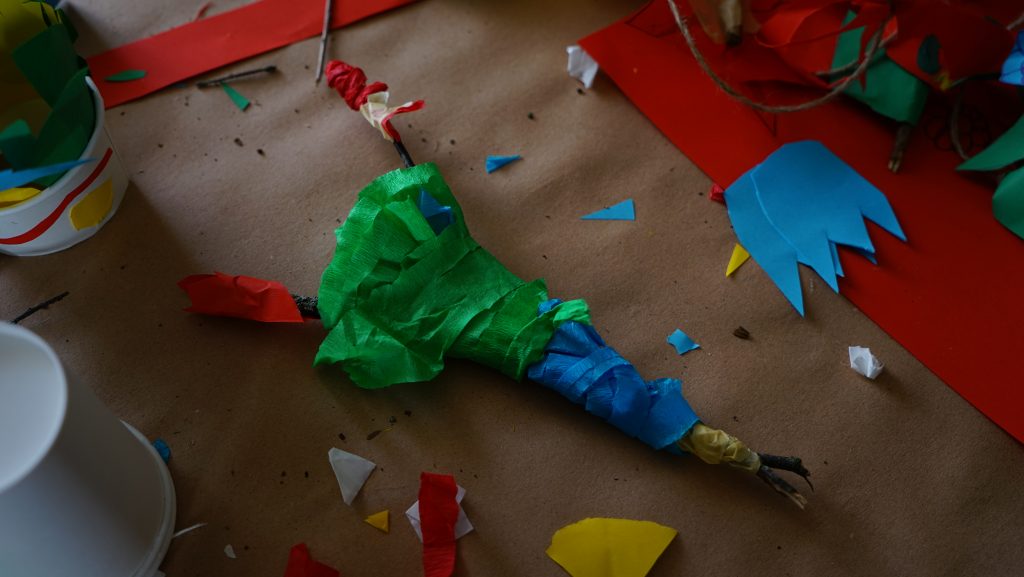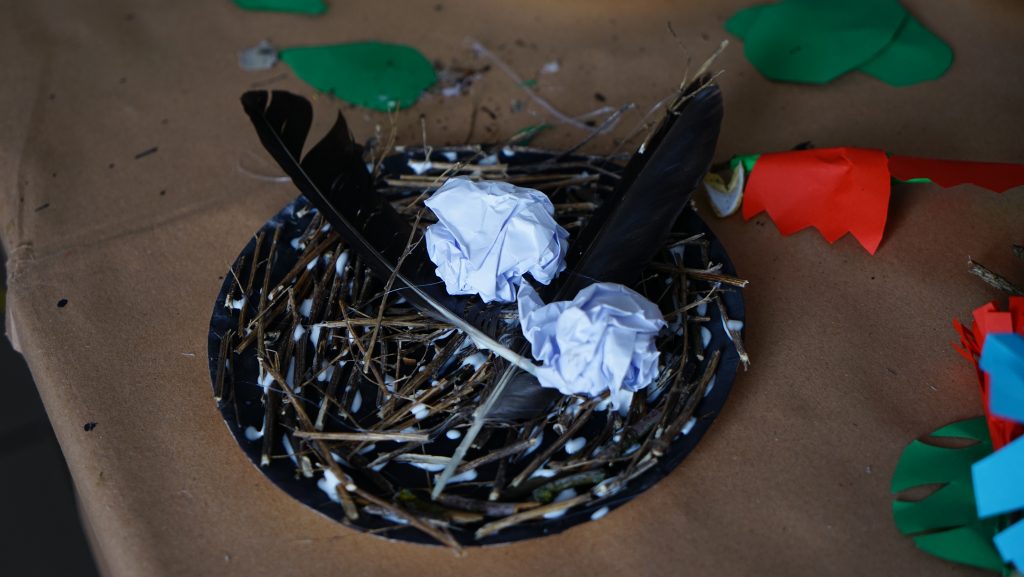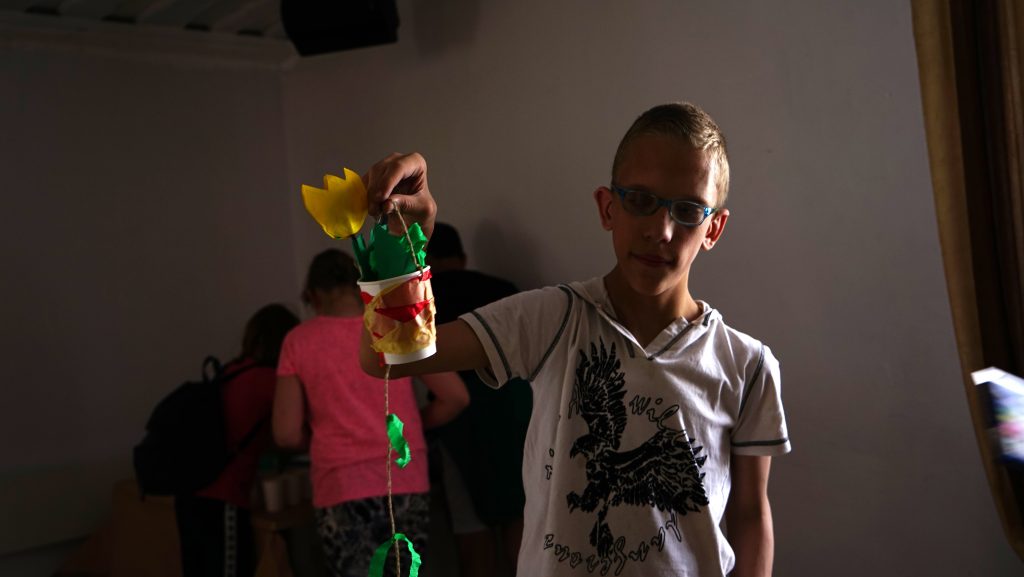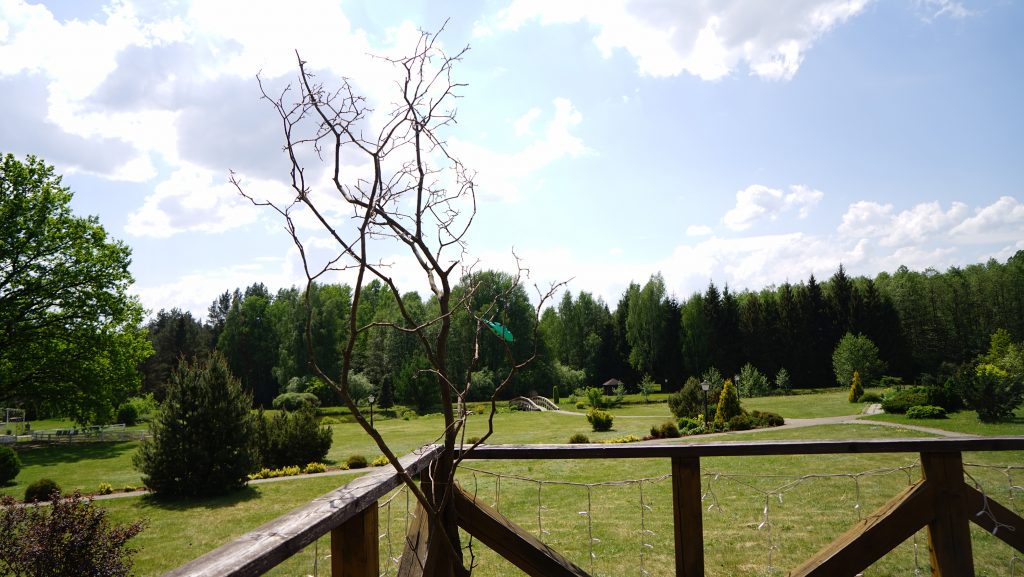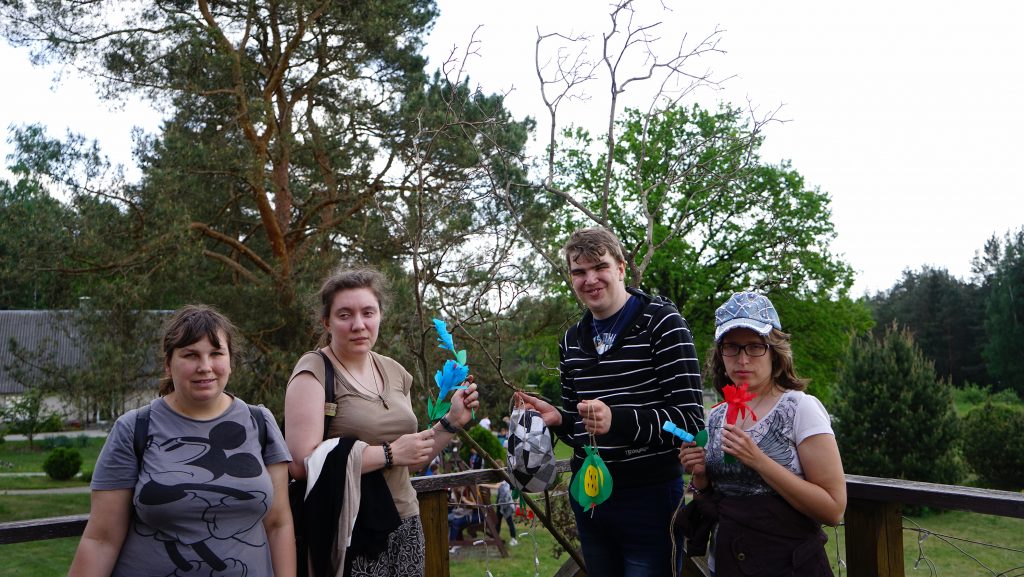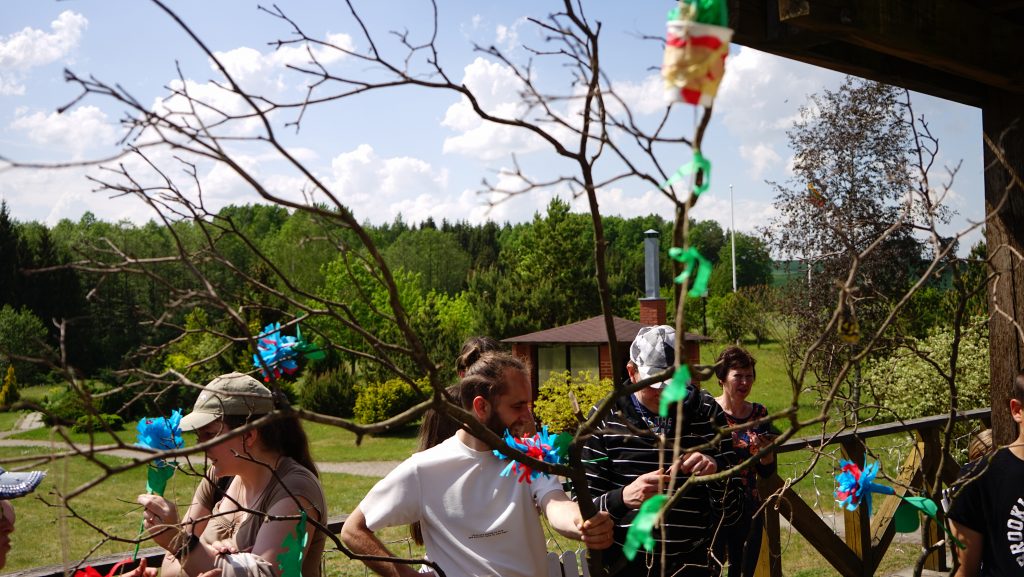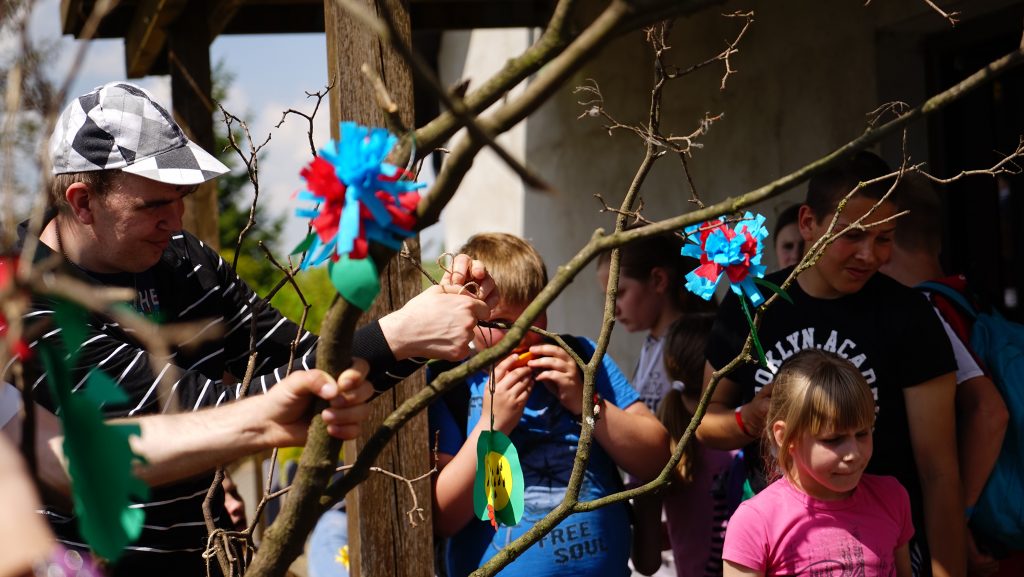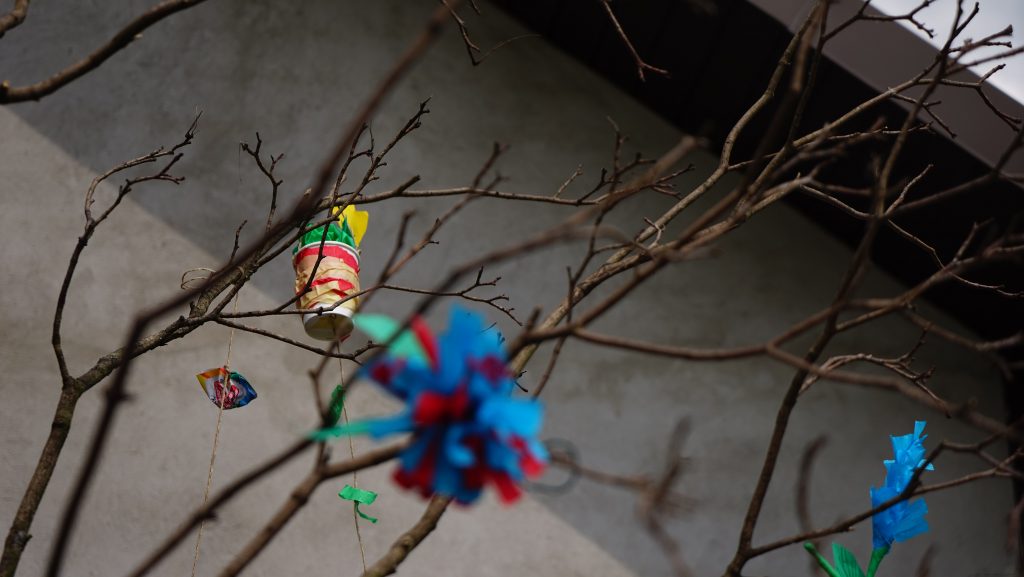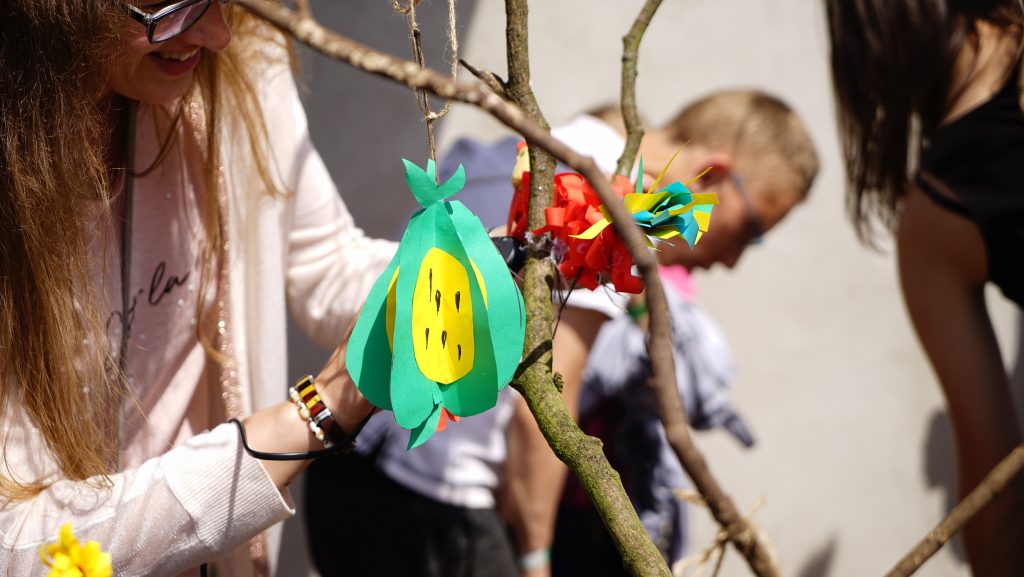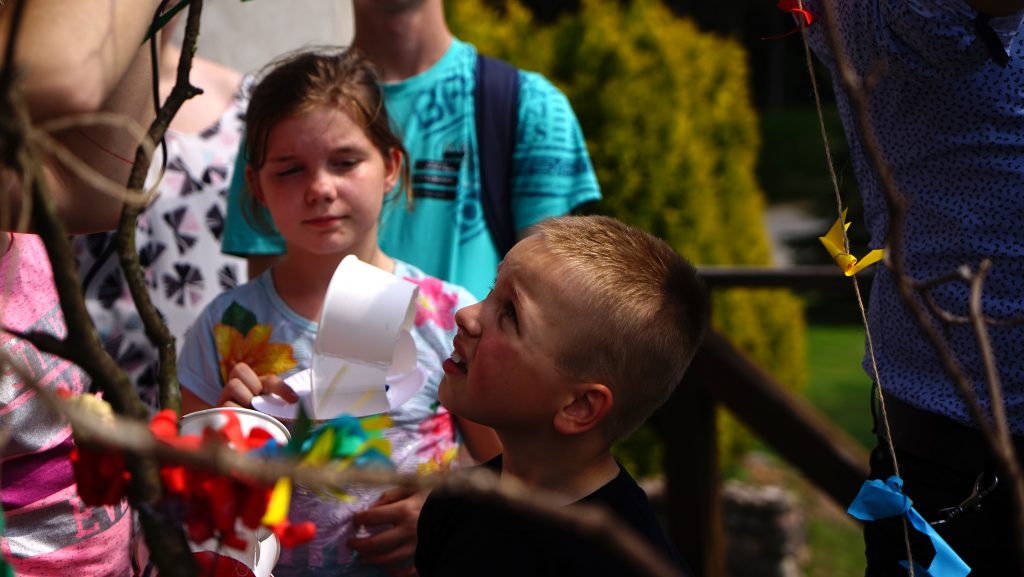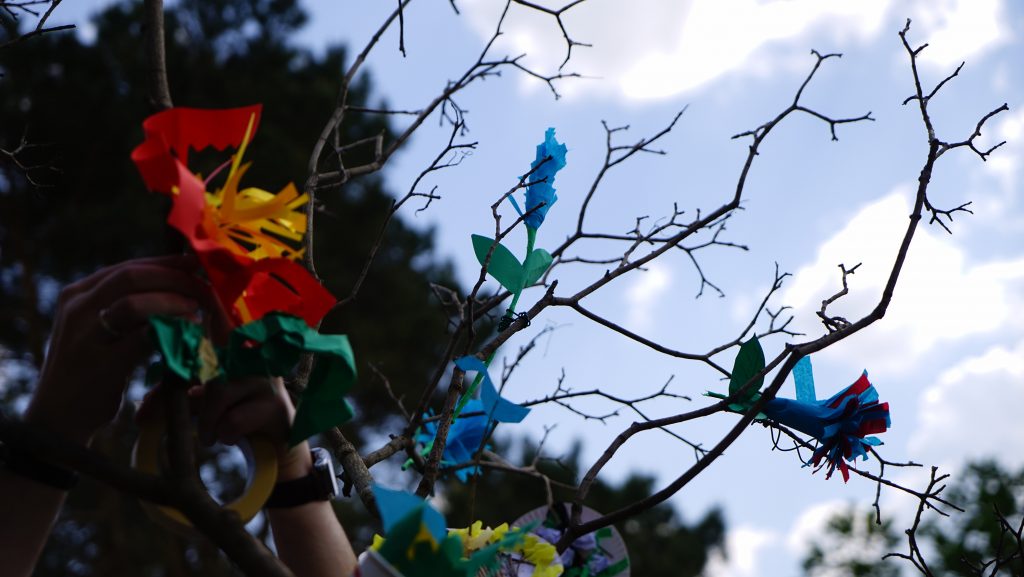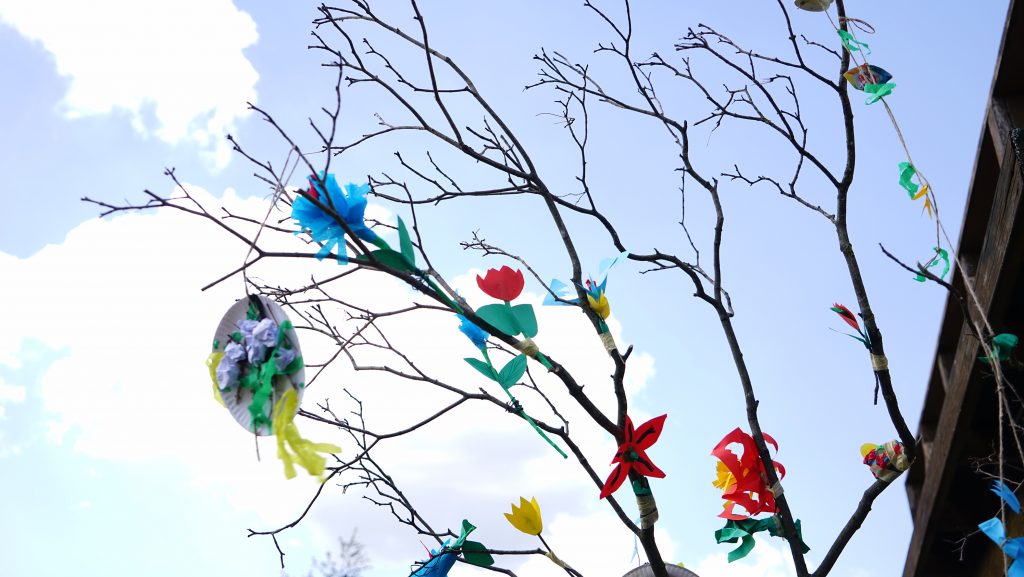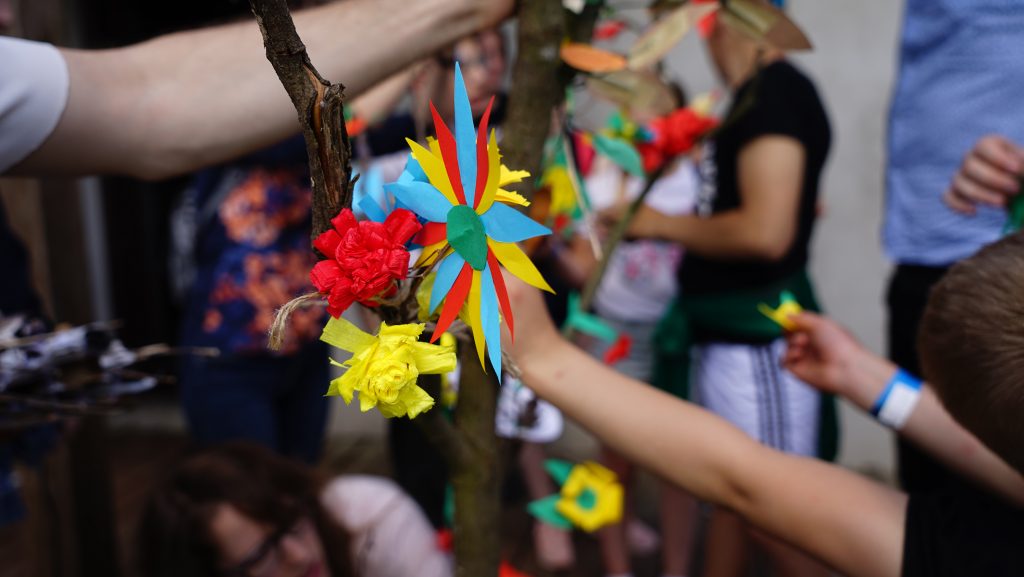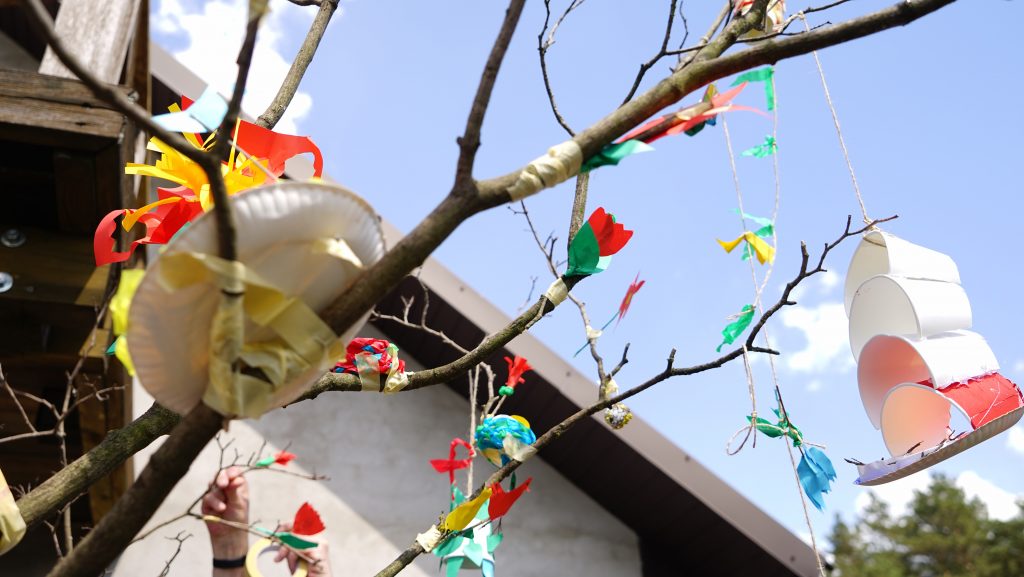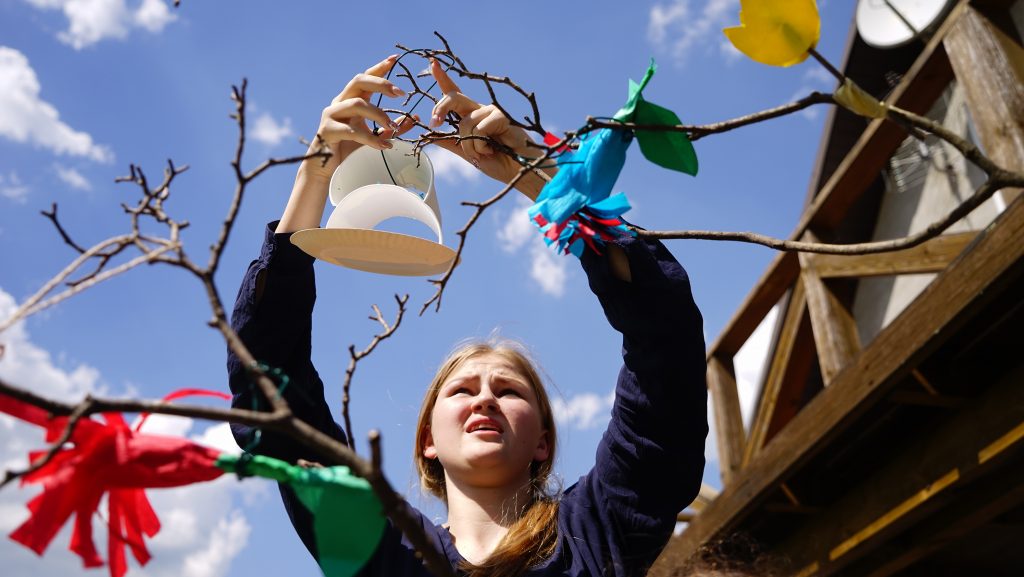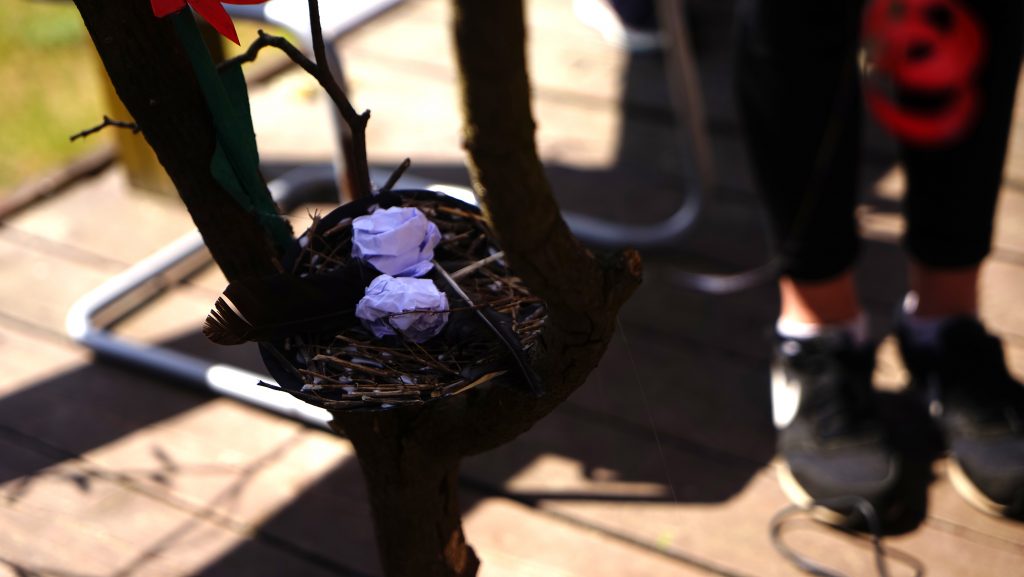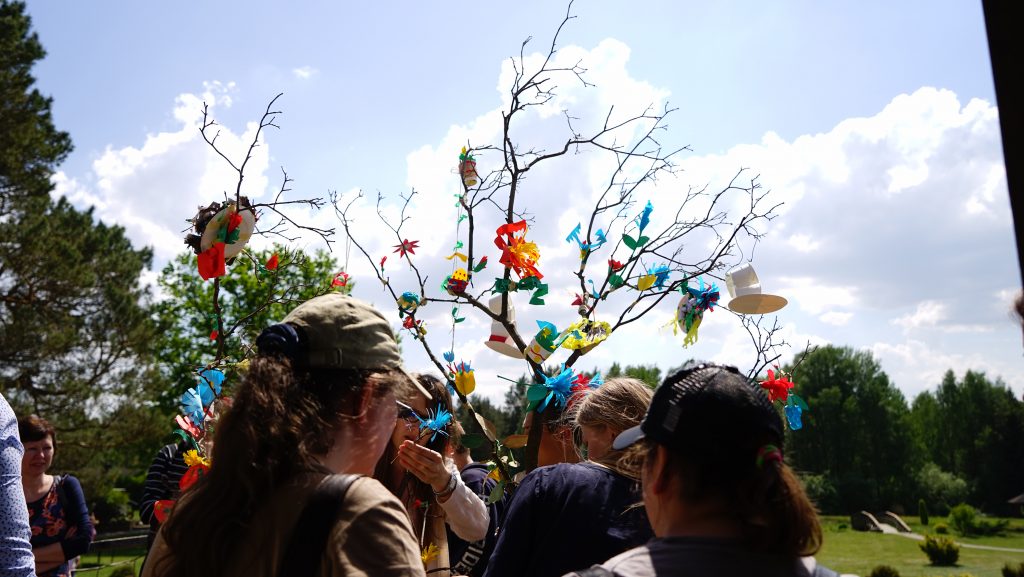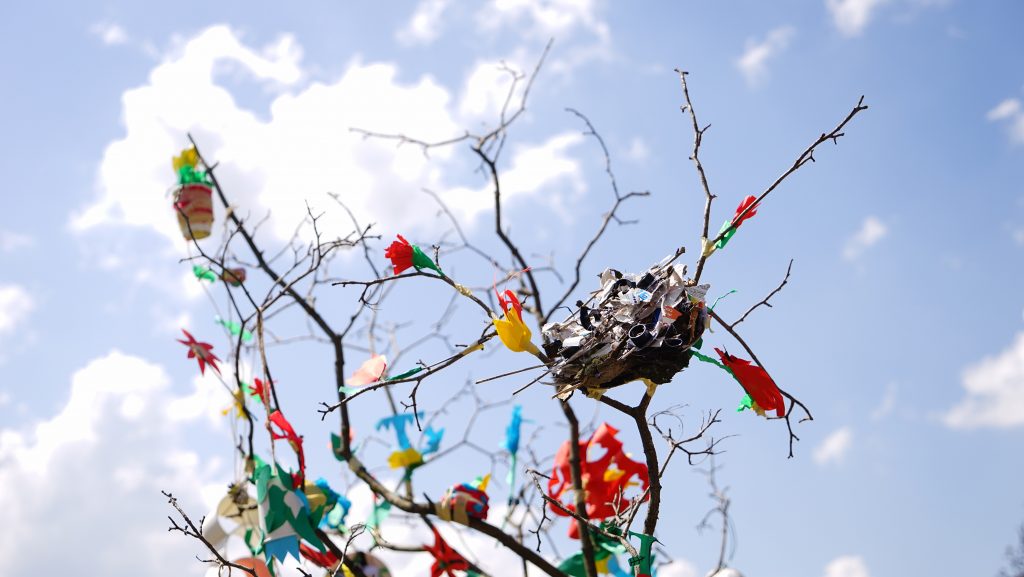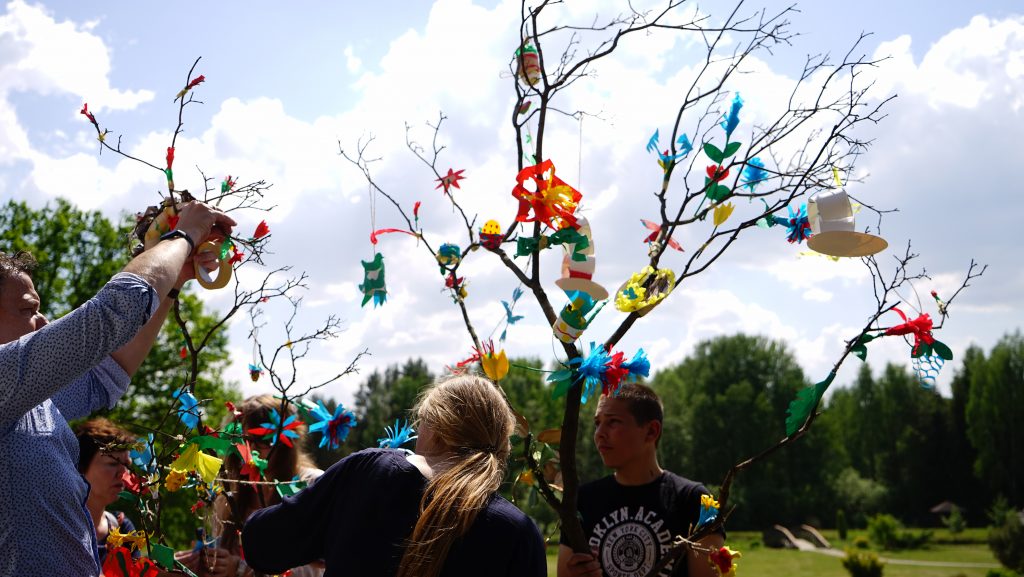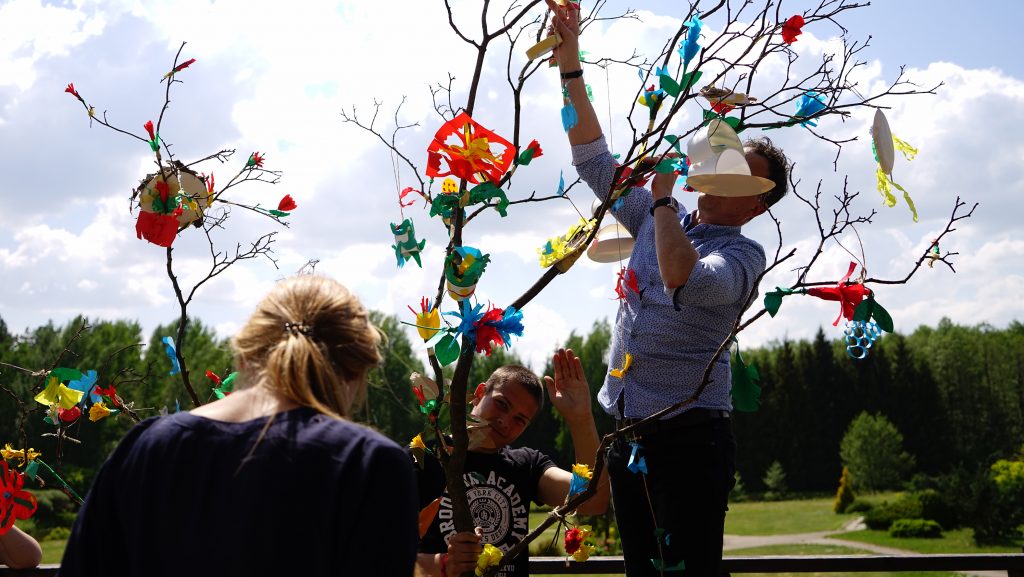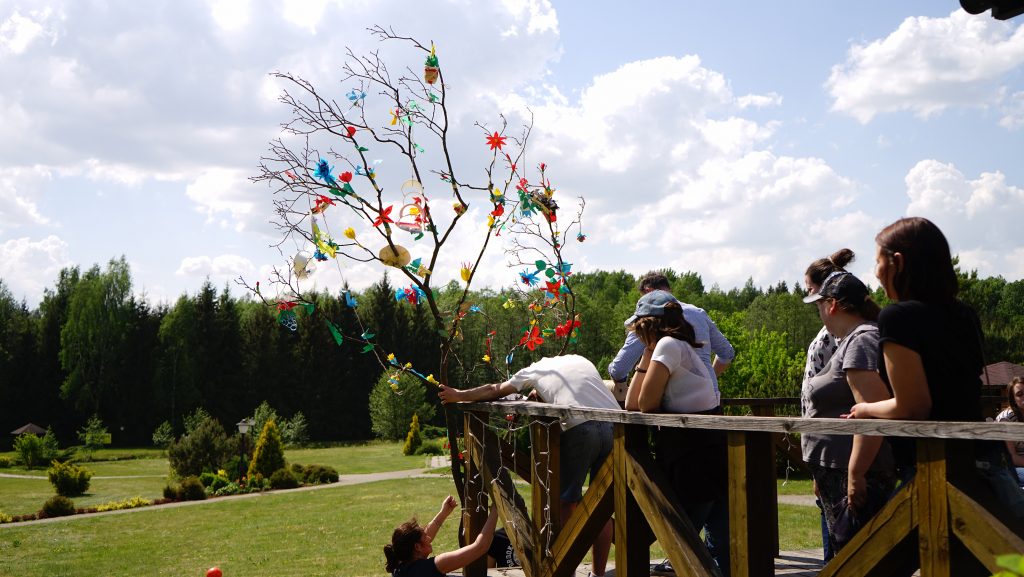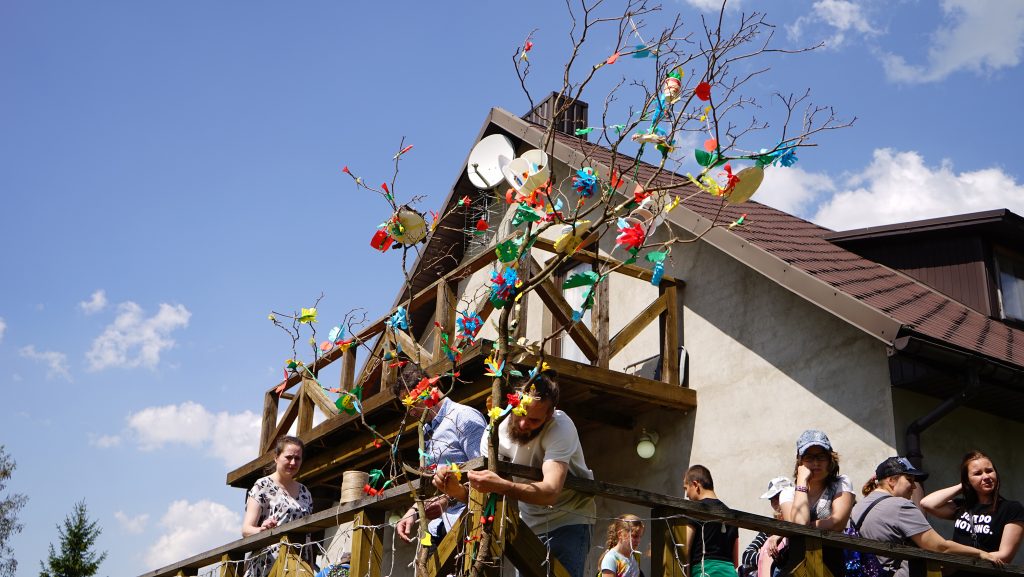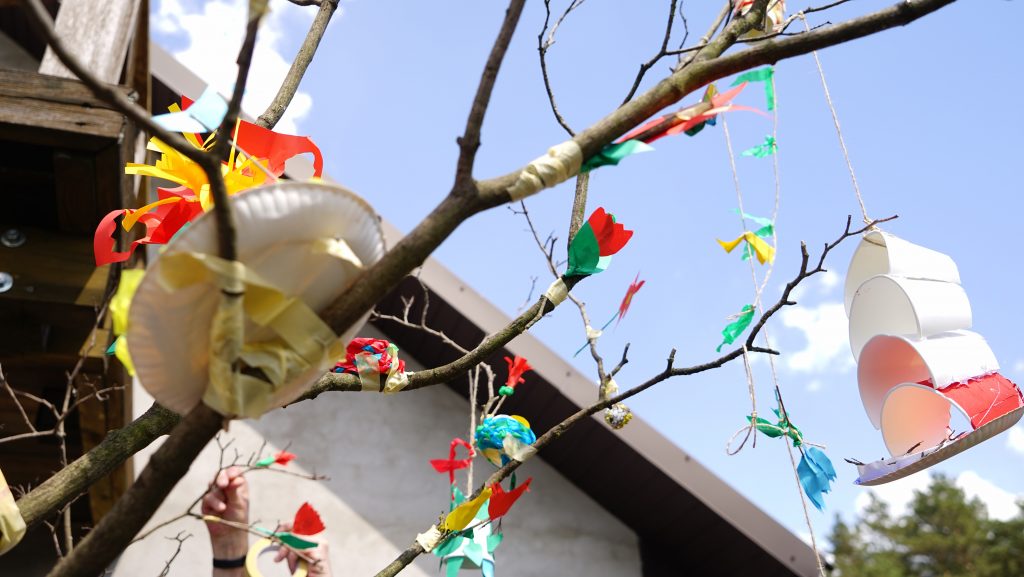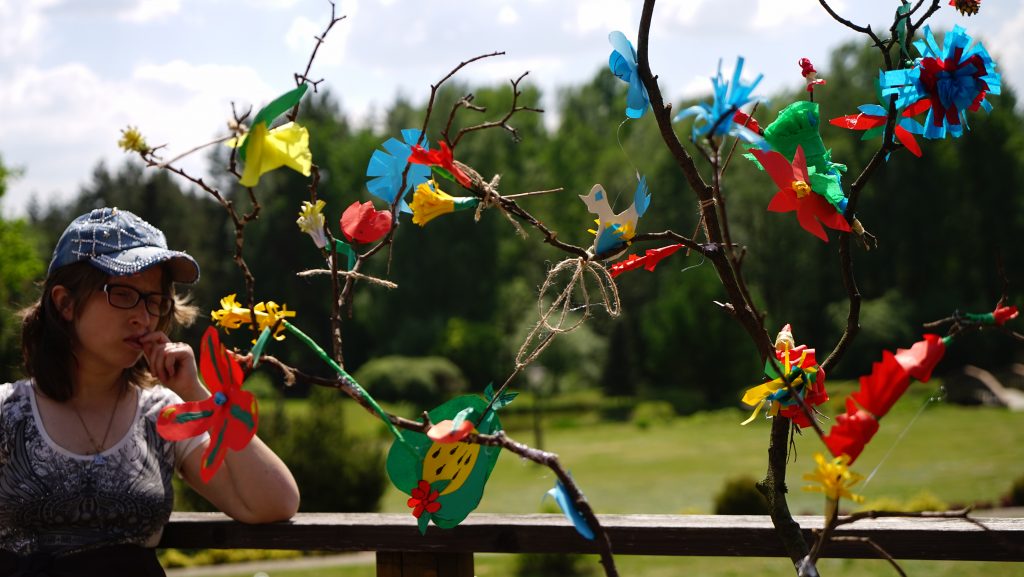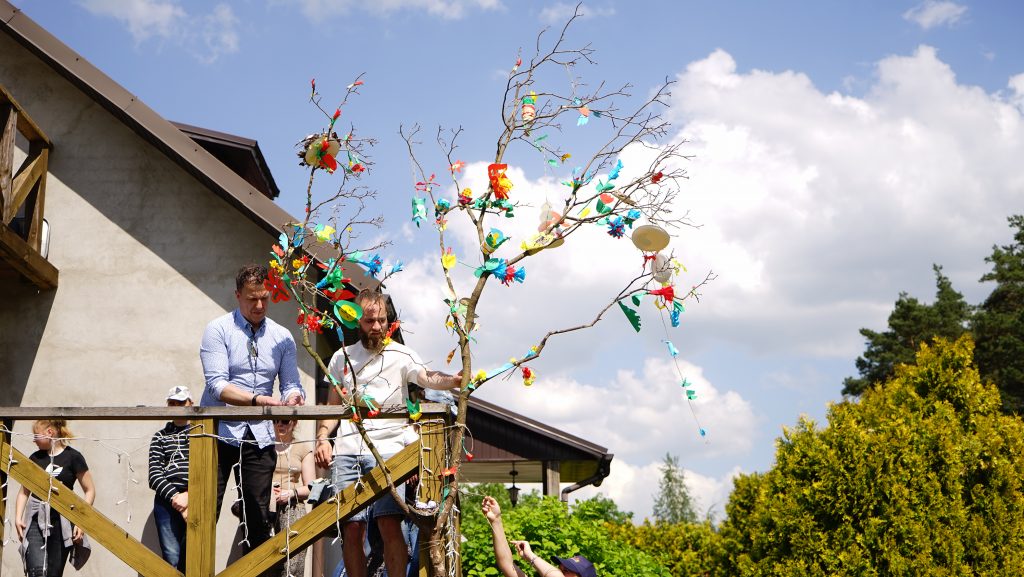Crown of the Tree
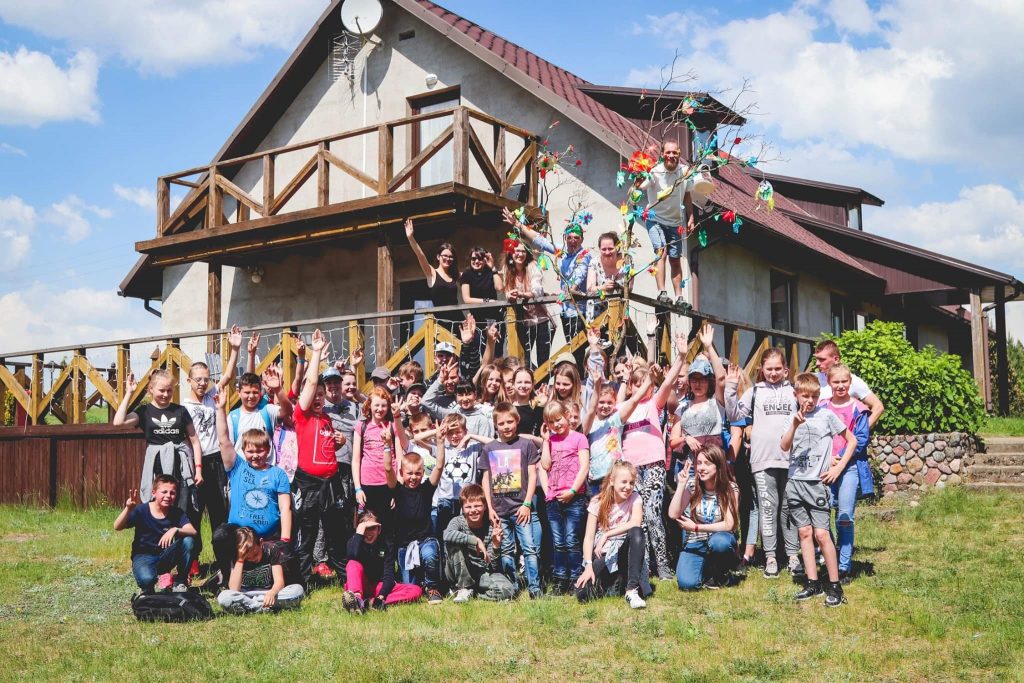
Organizing workshops is one of my art practices. I set different workshops for different age groups. If they’re older than sixteen, I encourage them to write. I talk about storytelling, creating characters, and I tell them all the benefits of writing letters to friends and family in hopes that they too send away letters. For younger kids, I prefer crafting, mainly for the language barrier. I visit small towns and villages, where finding a common language might be a bit challenging; you don’t really need to speak in any certain language when you work with scissors and glue and paper.
Everything was sorted. The materials had already been sent to the site, the images were prepared, and the notes were written down; the event would start at ten in the morning. I had planned everything in my head, what to say to raise curiosity, how to lead to the topic, and how to start; I was leading a crafting workshop about trees and nature with about sixty young students. The plan was to make and craft anything that we might find on top of the trees, and eventually assemble them all together on a big piece of branch that I’d found in the woods. Things seemed to be perfectly organized, but I only had to wait until the start of the session to face the surprises that were missing out of my plans.
I set up the projector and the chair in rows in front of it. I had already met some of the kids on the way to the campsite, we were on the same van, I met some others as they were playing in the yard, and a couple of them in the room as they were looking for a bathroom. It was exciting to meet them, and have them on the chairs in front of me. Gediminas, my friend who the director of the workshop camp asked if I was ready to start. He invited the children and the other mentors inside just as he got my approval.
I started by introducing myself, where I was from, and what I was doing in their country. I showed them pictures so that they wouldn’t be bored by long talks. Then, I started asking them questions about the trees. They knew enough about the trees, they just didn’t know how much they knew; the color of the leaves, the texture of the wood, varieties of the fruits, the gift of the shadow, and the fact that even a dead tree was still useful. I showed different types of trees, how the branches and leaves grew differently. I asked them if they could tell me what could be on top of the tree. Birds, they said, leaves and flowers and fruits. Beehives, I pointed at a drawing I prepared a few nights before. They were excited, quite nice to see that in their eyes, and almost ready to start the workshop. I showed them the materials we had, papers and paint and glue. But first, the workshop had two critical rules. We don’t waste materials, and we work clean. With that being said, we got started.
They were divided into four groups, as Gediminas had planned in advanced, and their mentors helped them with their crafts. Some were making flowers, some wanted to make fruits. Some of them were interested in drawing the leaves, and some of them were making birds’ nests. They each applied different techniques which was quite curious to watch. Their work was mainly inspired by the images I showed them, but of course, they added their own creativity. It’s fascinating how creative kids can be. One group used the pieces of papers and other materials that others had discarded, and had called trash.
As I toured around the room, I noticed some of the kids weren’t doing much, perhaps they didn’t have the courage to create, perhaps a bit intimidated by making something not so nice which was indeed far beyond my point. So, I grabbed a few sheets of paper, wire, glue, paint and brushes, and went back to my corner. I asked some of the kids if they’d like to join me. Two of the boys followed me to help me make something. I thought I’d like to make a branch with the wires, and attach some painted leaves onto it, perhaps make a bird’s nest to top it up nicely. One of the boys could speak decent English, and he was translating to the other boy. I asked them questions, just to know them a bit better, just to know what goes on in their world, what kind of video games they played, and how they entertained themselves in their free time. I gave them small tasks, so that they’d feel comfortable with their hands. We were almost finished with our small project that the kids were invited to lunch. We were supposed to assemble the tree in the afternoon. I took a walk around the empty room, empty but so full of color and spirit. The huge branch we picked from the woods was attached to the fences on the terrace, waiting to bloom; it was going to be spring all over again.
Indeed, it was spring. A big branch that had fallen from an old tree, already starting to decay, was coming alive again with the hands of the children. They were bringing their creations out from the room, and waiting for their turn to install them on top of the tree. It wasn’t about the object they’d created anymore, it was about the power of imagination, innocent creativity, an idea that was only in mind, and now slowly was turning into reality.
Special thanks to Jonava Culture Center, Roberto Cimetta Fun, and Europe Grand Central for their support to make this project happen.
Jonava, Lithuania, May, 2019


